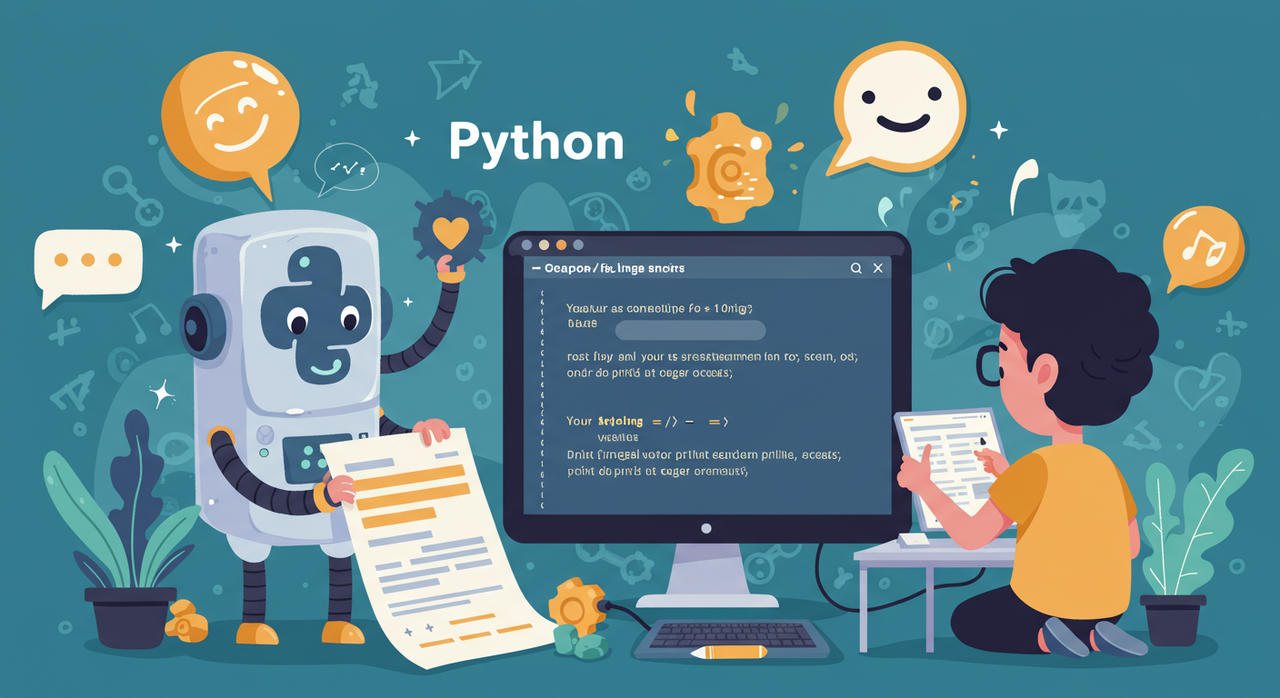
Is your child curious about how video games are made, how websites work, or how robots are programmed? If they've enjoyed visual coding platforms like Scratch and are ready for the next challenge, it’s the perfect time to introduce them to Python.
Don't let the name fool you—this powerful, real-world programming language is surprisingly one of the best first languages for kids to learn. In this guide, we'll break down everything you need to know about getting started with Python for kids, from why it’s a fantastic choice to fun projects they can build today.
Why is Python a Great First Programming Language for Kids?
Choosing a first programming language can be tricky, but Python stands out for several key reasons, making it an ideal choice for young learners.
- It Reads Like English: Python’s syntax is clean, simple, and intuitive. Code like this is easy for a child to understand, which reduces frustration and builds confidence early on:
print("Hello, World!")
- It's a "Real" Language: Unlike block-based coding, Python is a professional language used by companies like Google, Netflix, and NASA. Kids get a huge motivation boost knowing they are learning a skill used to build real-world technology.
- It's Incredibly Versatile: What can you build with Python? Almost anything! From creating simple games with Pygame to building websites and exploring data science, Python opens up a universe of creative possibilities.

Getting Started: Your 3-Step Plan for Python Fun
Ready to dive in? Starting the journey is easier than you think. Here’s a simple plan to get your child writing their first lines of Python code.
Step 1: Keep it Fun and Pressure-Free
The goal is to spark curiosity, not to create a mini-developer overnight. Focus on creating something cool, not on memorizing perfect syntax. Celebrate small wins, like making the computer print their name or do simple math.
Step 2: Use a Kid-Friendly Coding Environment
You don't need a complex setup. Start with a simple, browser-based tool like Replit or Trinket. They let you write and run Python code directly in your browser with no installation needed!
Step 3: Start with Simple, Exciting Concepts
Begin with the basics, but frame them around a fun outcome. Try making a program that tells a few jokes using print statements, or a simple calculator that asks for two numbers and adds them together.
Fun First Python Projects for Kids
Theory is great, but building things is where the magic happens. Here are a few classic beginner projects that are both educational and incredibly rewarding:
- Mad Libs Story Generator: Ask the user for nouns, verbs, and adjectives, then plug them into a pre-written story for a hilarious result.
- "Guess the Number" Game: The computer thinks of a secret number, and the player has to guess it, with the program giving hints like "too high" or "too low."
- Turtle Graphics: Use Python's built-in "Turtle" library to draw colorful shapes, patterns, and spirals. It’s a visual and highly creative way to learn about loops and functions.

Top Resources to Continue the Adventure
Once you've started, there are many fantastic resources designed specifically for teaching Python to kids:
- Books: Look for titles like "Python for Kids: A Playful Introduction to Programming" by Jason R. Briggs.
- Websites: Code.org, Khan Academy, and CodeCombat all offer excellent, interactive Python tutorials.
- Online Courses: Platforms like Outschool and Udemy have project-based Python courses designed for young learners.
The journey of learning to code is a marathon, not a sprint. By starting with a language as welcoming and powerful as Python, you are giving your child a foundational skill that will foster creativity, problem-solving, and logical thinking for years to come.
What's the first project your child is excited to build? Share your ideas in the comments below!



0 Comments